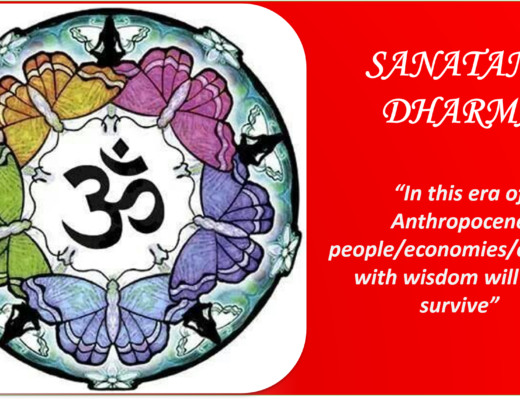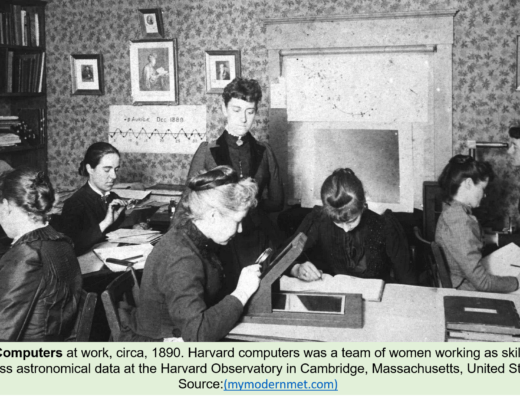Arnab Bose
Abstract
This short research extends the idea of entropy in information theory to social settings in human systems. The extension of the idea leads to a formative or precursory delineation of social entropy which can be used as a framework or tool to extricate nuances that can be used in various fields from climate policy to AI (Artificial Intelligence) safety. This paper, first gives out the requirements to understand the framework of social entropy, then gives out certain premises to delineate social entropy. Finally, the paper concludes in which fields can social entropy be used.
Introduction
The concept of Social Entropy builds from the idea of entropy in information theory first established by C. E Shannon in 1948. It also draws in the concept of cybernetics elucidated by Norbert Weiner coincidentally again in 1948. Social Entropy will dovetail ideas from social sciences like emic and etic, culture, normative and positive premises however these will be subsumed in the broader topics of information entropy and cybernetics. There should be a notable mention of Tractatus Logico-Philosophicus (TLP) which will be used to delineate the format of the paper. TLP will also be used as an epistemic and narrative tool in this paper.
Argument
In this research, suppose the following:
Entropy is a measure of disorder; high entropy means higher disorder (or greater unpredictability). Higher or lower entropy is a positive position (or postulation). A positive position is a statement of a fact.
Whether higher or lower entropy is morally or ethically good or bad is a normative position.
The increase in divergent normative positions on positive positions means an increase in Social Entropy.
Explanation
In the following illustration positive positions is delineated in Level 1 and normative positions in Level 2.
Level 1: Positive Entropy
Propositions of Set A
1. In City A in Country A the buses always arrive on time and/or follow the schedule.
2. In City B in Country B the buses seldom come on time and/or follow the schedule.
To the question:
Will the next bus arrive on time?
The answers will be:
In City A – Yes, the bus will arrive on time. (Low Entropy, Predictable)
In City B – May be the bus will arrive on time, though it seldom does. (High Entropy, Un-Predictable)
Propositions of Set B
1. In City C in Country C the persons of a particular identity X group are allowed to wear only a particular dress code and the allowed dress is of the colour blue while walking in public.
2. In City D in Country D the persons of a particular identity group X are allowed to wear a wide variety of dresses from a wide variety of patterns in an acceptable dress code and the allowed dresses can be of any colour while walking in public.
To the question:
What colour of dress will person of identity group X wear while walking in public?
The answers will be:
In City C – The colour of dress a person of identity group X will wear while walking on the street is blue. (Low Entropy, Predictable)
In City D – The colour of dress a person of identity group X will wear while walking on the street is one of many colours. (Hight Entropy, Un-Predictable)
Level 2: Normative Entropy
Here a set of persons are required as observers and they shall comment if a positive position is morally and ethically good or bad.
It can be found that a set of observers have found that high positive entropy in bus schedules is ‘bad’, whereas high positive entropy in colour of dress is ‘good’.
The Social Entropy goes up as the level of disagreements in the normative positions increase.
Feedback
The concept of Social Entropy can help in creating a measurement tool to analyse discourse which requires nuanced understanding. However Social Entropy alone might not be a free-standing structure. There are other concepts which will make Social Entropy a viable framework or tool. One of them is Feedback as noted in the discourse of Cybernetics (Weiner 2019). Feedback will add correct context; example, if the busses do not follow schedules properly then the residents of those cities will face perennial problems and increase cost of their transport, and so on. Similarly, if particular person groups are forced to wear only a particular colour, then their self-realised quality of life may suffer.
Qualia
One method to address or locate feedback as being good or bad is to locate if the increased social entropy leading to increase or decrease in qualia or pain or hurt. The discourse on qualia can be found in Ramachandran, V. S., & Hirstein, W. (1997)
Conflation
The complete absence of social entropy will be a state of conflation; and as argued before in certain situations conflation (or when observers do not have any diverse opinions to a particular context) is a good thing. Example, shouting ‘Fire’ is a crowed theatre will be considered incorrect even by free speech absolutists. So, there is no social entropy or there is a conflation of opinion that shouting ‘Fire’ is a bad thing to do.
Conclusion
The concept of Social Entropy can be used in various discourses including that of logic, Artificial Intelligence safety (Liu, L. H. 2021), analysis of risk and uncertainty, climate change and so on. This introductory works hopes this discourse can be further developed in various ways.
References
BBC (1989), BBC Horizon, Wittgenstein: A Wonderful Life; retrieved from https://www.youtube.com/watch?v=8BoKjQfMihs (1min 28secs onwards, taken as a transcript)
Liu, L. H. (2021). Wittgenstein in the Machine. Critical Inquiry, 47(3), 425-455. https://www.journals.uchicago.edu/doi/10.1086/713551
Ramachandran, V. S., & Hirstein, W. (1997). Three laws of qualia: What neurology tells us about the biological functions of consciousness. Journal of Consciousness Studies, 4(5-6), 429-457.
Shannon, C. E. (1948). A mathematical theory of communication. The Bell system technical journal, 27(3), 379-423.
Wiener, N. (2019). Cybernetics or Control and Communication in the Animal and the Machine. MIT press.
Wittgenstein, L. (2012). Tractatus Logico Philosophicus. Simon and Schuster.
End Notes:
“Logic is still in the melting pot; but one thing gets more and more obvious to me is that the propositions of logic contain only apparent variables and whatever may turn out to be the proper explanation of apparent variables it consequence must be that there are no logical constants. Logic must turn out to be a totally different kind than any other science.”
(BBC 1989, 6min 28secs onwards)
“Mine is the first and only world. I want to report the world as I found it.” – Ludwig Wittgenstein (BBC 1989)
Tat Tvam Asi from the Upanishads.







No Comments